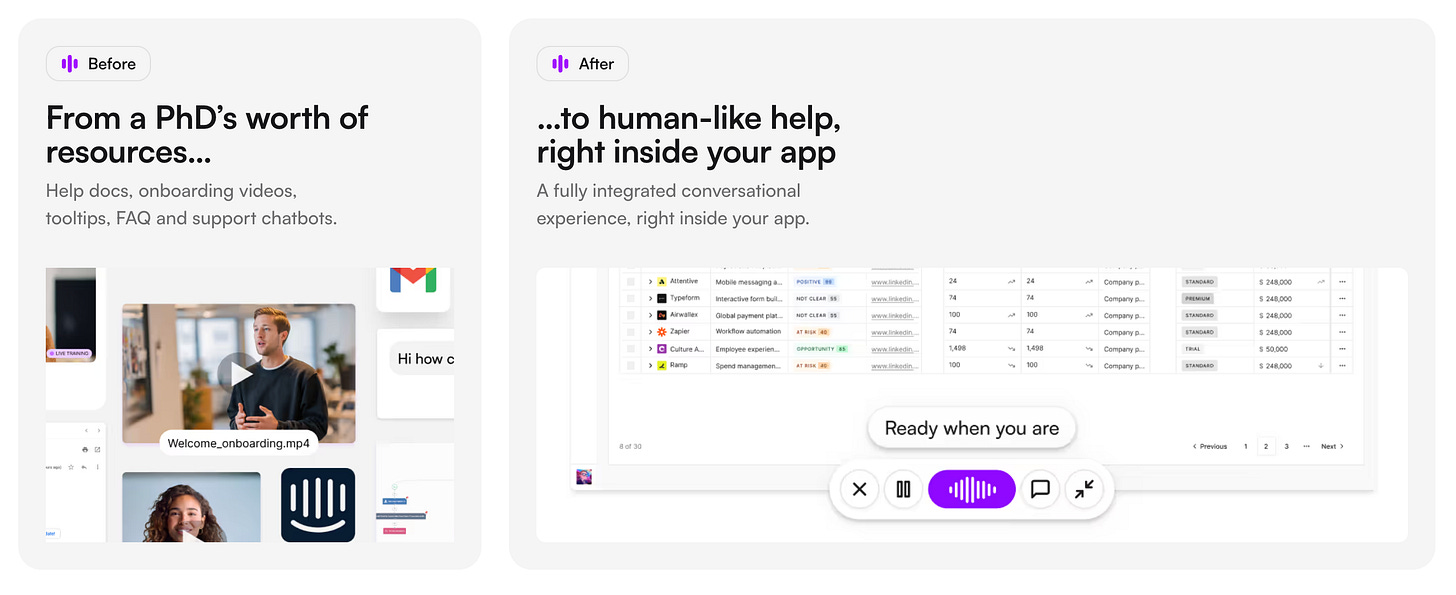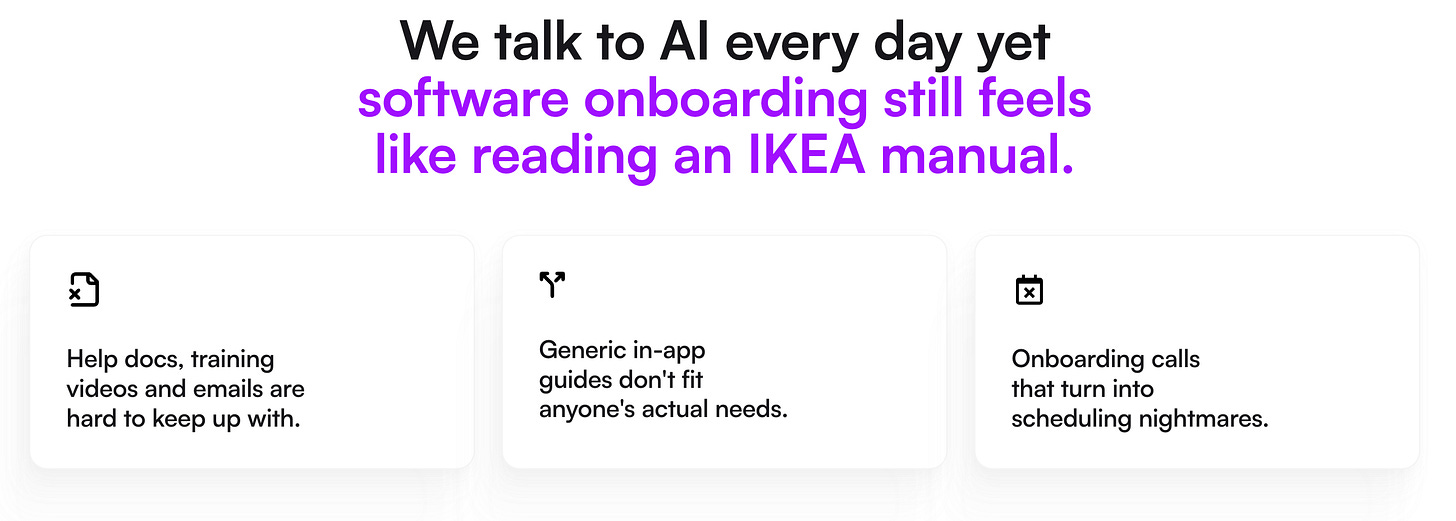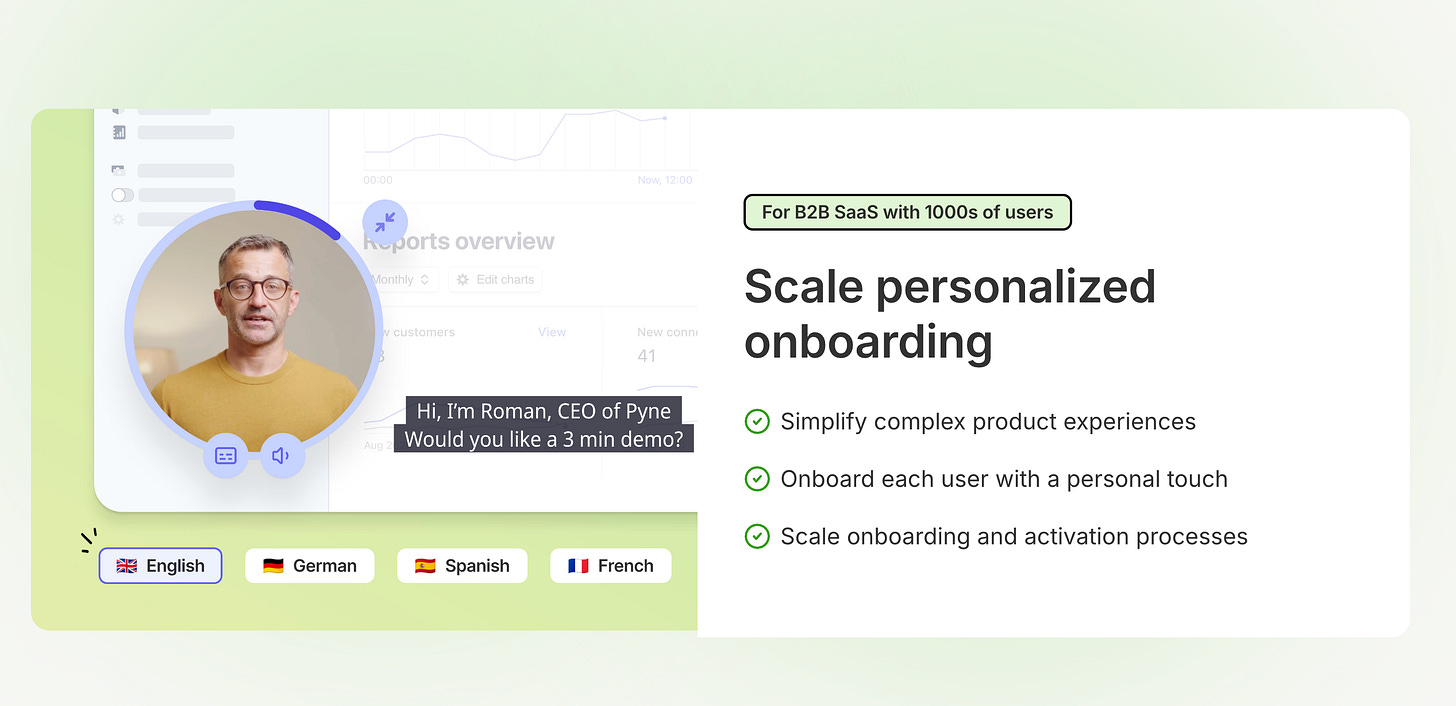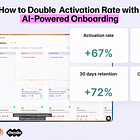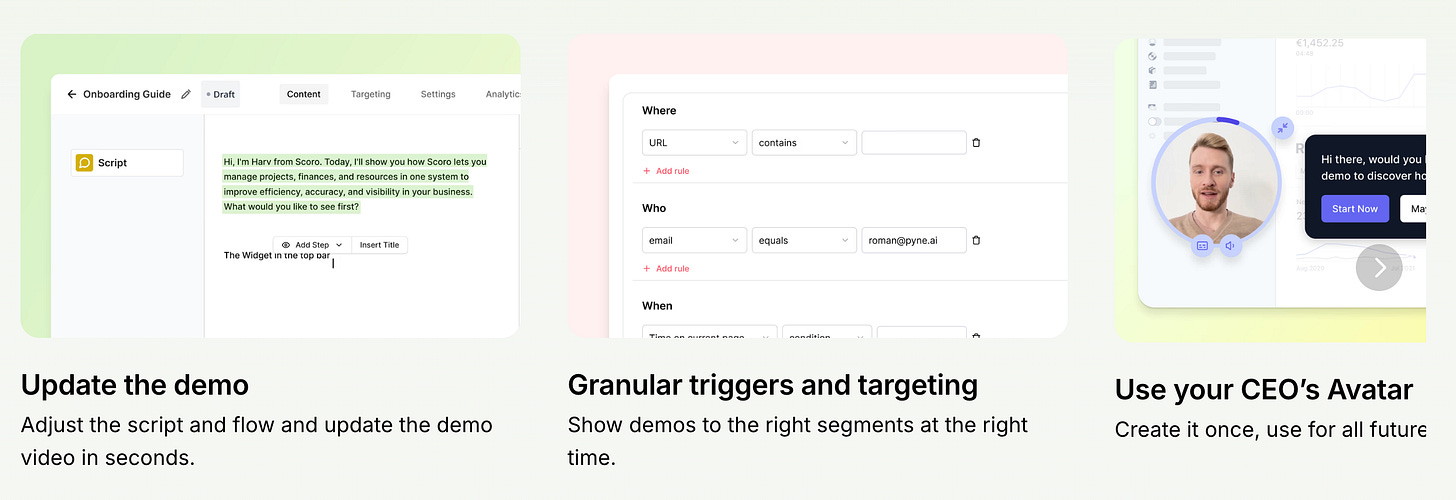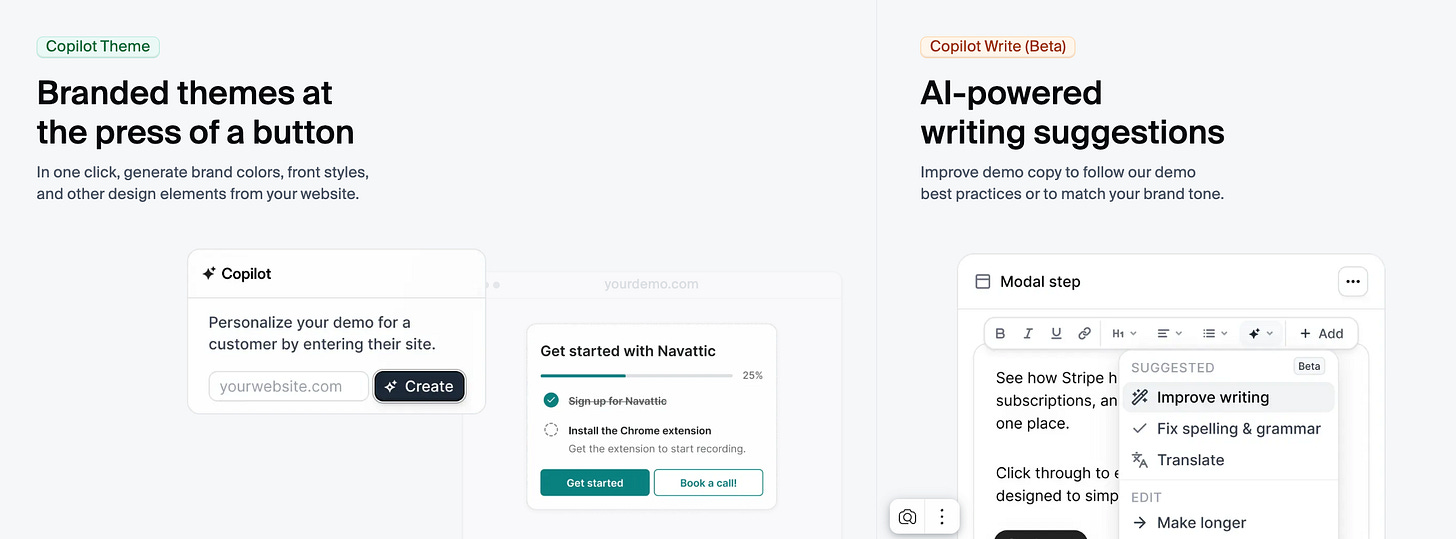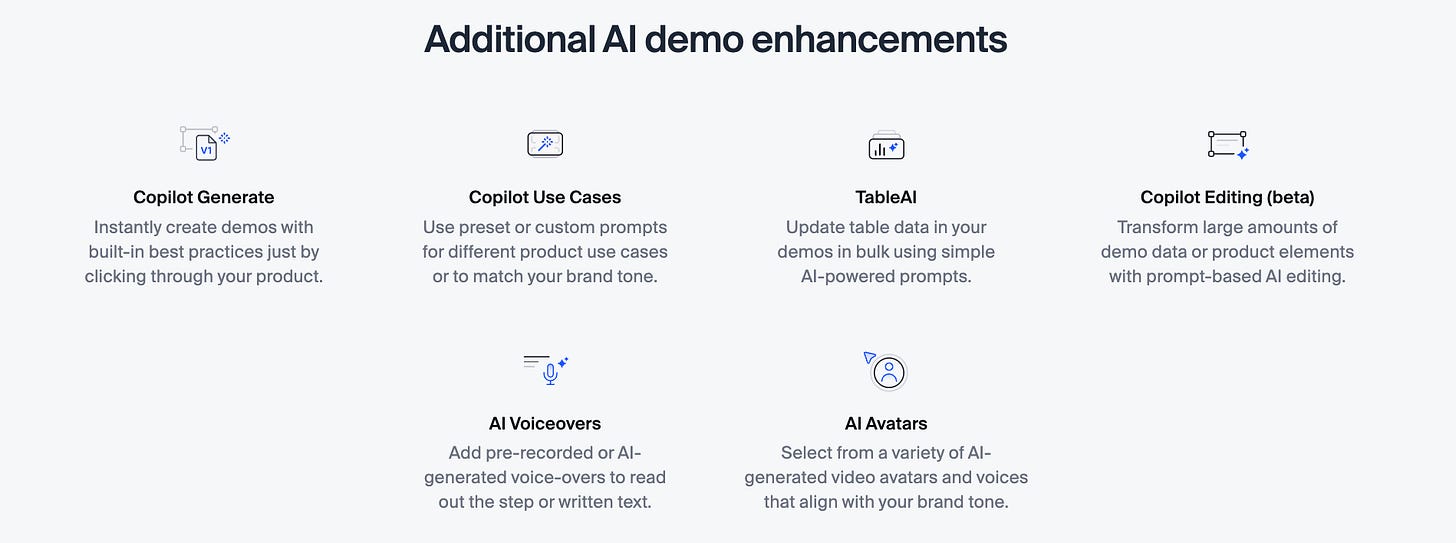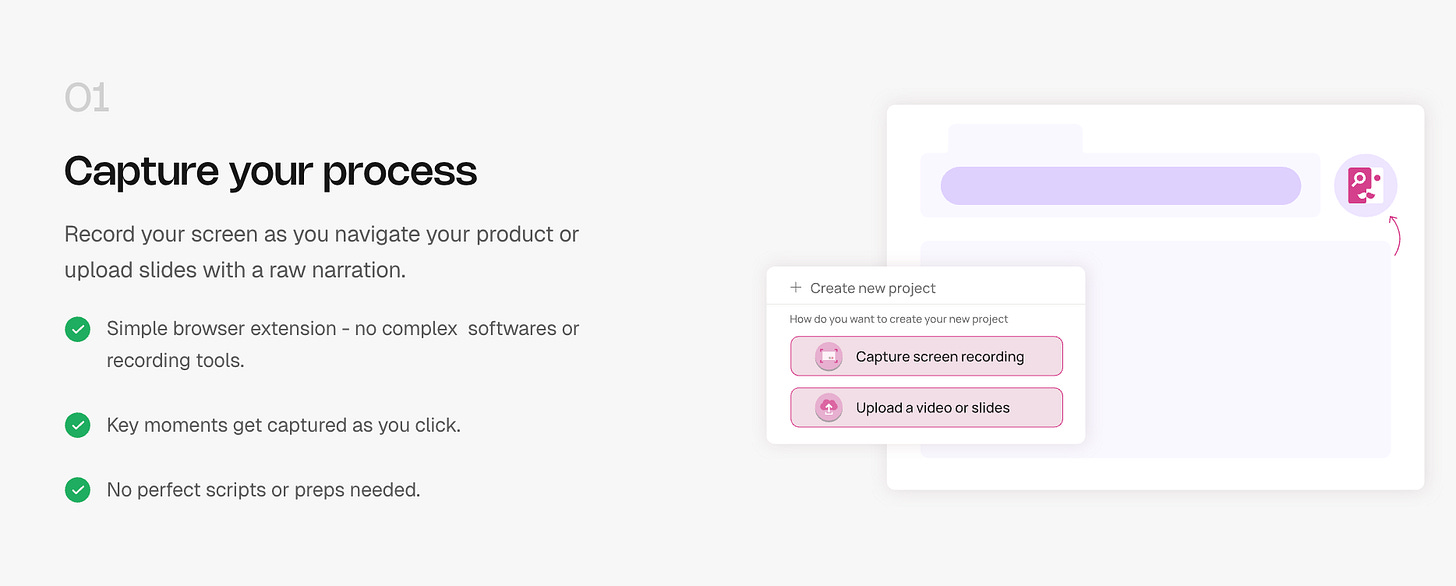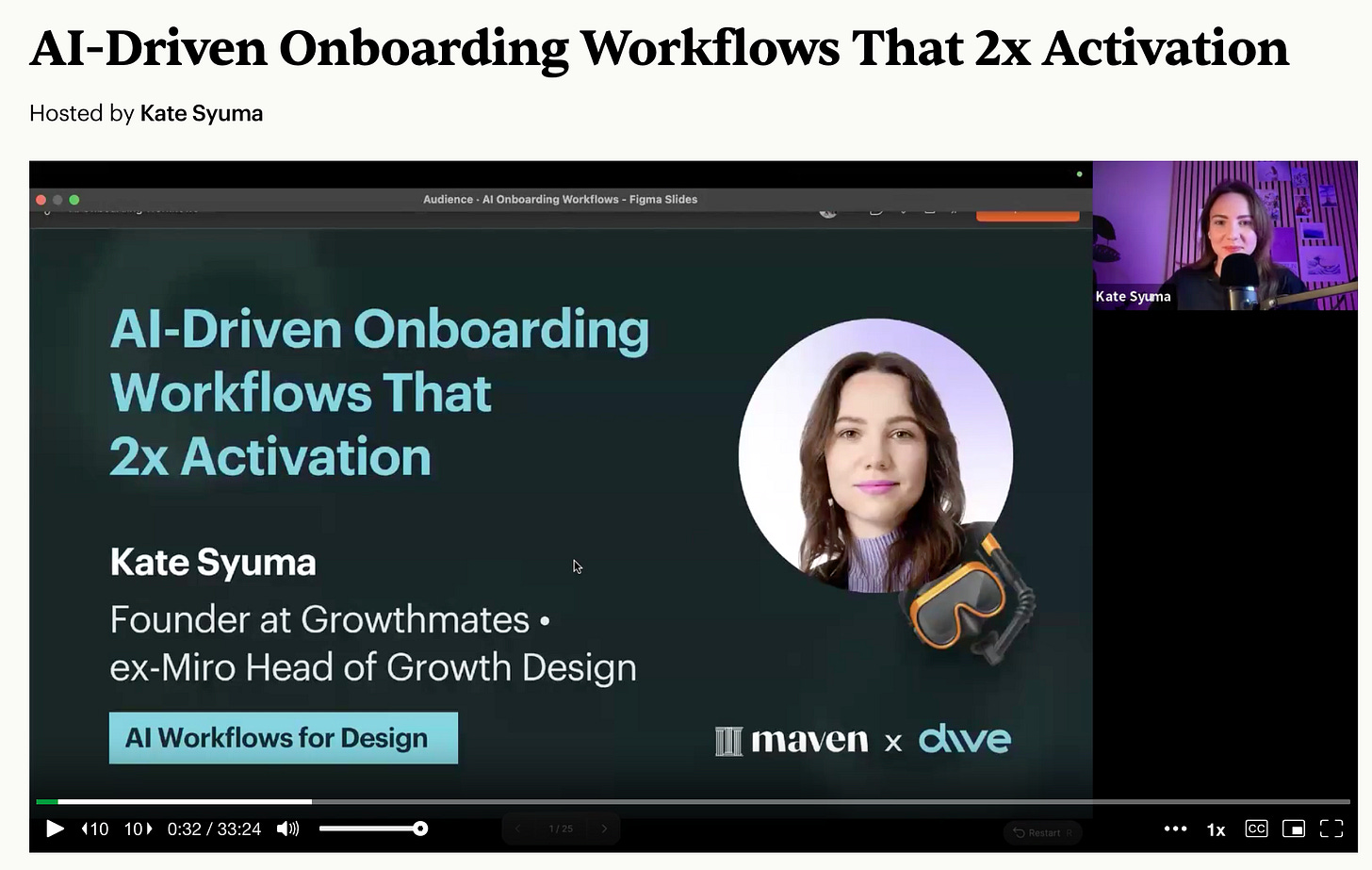🆕 5 AI Onboarding Tools That Will Redefine 2026
Onboarding is no longer about UI — it’s about human-like guidance at scale.
Hello everyone 👋 I’m Kate Syuma, and welcome to Growthmates.news — the newsletter where we explore growth stories to inspire your professional and personal growth. Join the community of 7,000+ Product, Design, and Growth people from companies like Amplitude, Intercom, Miro, Atlassian, Grammarly, Framer, and more.
If you’ve ever shipped a feature you were proud of… and then watched users ignore it — I feel you.
Onboarding is where the real product experience begins. It’s that moment when users decide: “This is exactly what I need” or “Meh, maybe later”.
And here’s the surprising part from my recent talks and workshops: most teams are still relying on tooltips and checklists. Today, I want to show you something new.
Meanwhile, AI onboarding is evolving much faster than we think. Not AI features. Not AI hype. Actual tools — helping users do the right thing from the first click.
So today, I’m sharing 5 new AI onboarding tools that help users:
Learn faster with AI voice agents;
Activate deeper with AI video assistants;
Reach value sooner — without your team hand-holding everyone.
Meet new Growthmates Partner 👋 Obi — AI Voice agent for customer onboarding.
Your users don’t need another walkthrough — they need a guide that feels human. Obi by Cor is an AI onboarding companion that talks to your users inside the product, understands their intent, and helps them take the next best step. It turns complex onboarding flows into natural conversations — so users get it from day one.
Best way to support Growthmates? Explore more fantastic tools 👇
Now, let’s dive into today’s story 👇
1. Obi By Cor — AI Voice assistant for Onboarding.
I’ve been on the lookout for nice AI-powered onboarding solutions for months, until
pointed my attention to Mantas Aleksiejevas. When Mantas showed me what they’re building at Cor, I was blown away.Obi brings human presence through the most obvious source — the voice. A new wave of products is shifting from “show them” to “talk them through it.” Why? Because most onboarding friction happens while users are trying to act, not just watching.
Think of Obi as a smart co-pilot inside your product: It listens to where users are stuck and speaks up with timely, contextual guidance. No more searching docs, guessing what to click, or abandoning mid-flow.
Here’s a real demo that I recorded for you — take a look and see how it works in action 👇
To put it simply, Obi is a voice-enabled onboarding assistant embedded inside your product. Users ask real questions → Obi answers with step-by-step, in-the-moment guidance.
🎯 How Obi by Cor is used for onboarding:
Removes friction: no typing, no help center hopping;
Adapts to persona + progress in real time;
Works like a product coach users can talk to anytime.
✅ When to use Obi:
Use Obi if your product requires context-heavy onboarding — where users must:
Set up workflows correctly from day one;
Integrate data or connect multiple systems;
Follow industry-specific rules or steps;
Onboard multiple teammates continuously (enterprise scale).
Best suited for:
Vertical SaaS (finance tools, HR, compliance, healthcare platforms);
Highly configurable products;
AI-native products where onboarding depends on user context;
Products where CS onboarding doesn’t scale
💡 Unique capabilities:
Understands context from user actions;
Guides across screens within the same flow;
Especially strong for “high support load” products
📌 Takeaway: Make your onboarding feel like a supportive friend talking and explaining their favourite product to you.
2. Pyne.ai — AI Video Assistant.
In 2024, I was advising a team behind Pyne.ai — fascinated by their idea:
onboarding that feels like real hand-holding…but scaled by AI. And then I saw it actually work.
After a year of hard work, they had their first big client, TheyDo — a fast-growing enterprise product.
shared in one of the guest posts how they replaced clunky click-tours with a CEO AI onboarding agent powered by Pyne. Users followed a human face, not a checklist — and activation more than doubled. Here’s a full post about this success story:👉 What it is:
Pyne.ai brings the next generation of onboarding: AI video agents that look, speak, and behave like your team (even your CEO 👀), guiding users in the product while they interact with it. Look at this 👇
Instead of passive videos, users click, explore, and learn inside a real product environment. And the AI Agent adapts dynamically to what they do.
🎯 How Pyne.ai is used for onboarding:
Replace long help documentation with conversational guidance;
Decrease cognitive load: users simply follow a human-like agent;
Walk through activation tasks while seeing exact UI highlights;
Build trust early thanks to real human face & emotion.
✅ When to use Pyne.ai:
Use it when activation requires confidence:
Complex value delivery steps;
First-time setup with risk or anxiety;
Trust-critical industries (data, finance, strategy)
💡Actual results from real deployments:
+67% activation rate;
8× faster time-to-value;
+72% 30-day retention;
2.3× trial → sales opportunity conversion
📌 Takeaway: Make onboarding feel like someone’s right there with you.
3. Navattic Copilot — AI-powered demos.
I look at the Navvatic team (
my eyes on you 😉) since I first discovered the product through ’s content. While this is quite a well-known product in the “interactive demo” space, I was curious to check how they now apply AI to their stack.It’s pretty cool how they hooked me into “try it out”, I wish I’d see more before the preview locks 😅.
👉 What it is:
Navattic Copilot is an evolution of Navattic’s interactive product demos — but powered by AI.
It enables you to create AI-narrated, click-through experiences that explain your product contextually as users explore it — like a “guided sandbox” for onboarding and evaluation.
🎯 How Navattic Copilot is used for onboarding:
Instead of static video walkthroughs, users get an interactive trial of your product, where they can click and explore features safely;
Copilot’s AI narration adapts to the user’s behavior and explains things contextually (“You just created a project — here’s what happens next.”);
Teams can personalize onboarding flows by persona or use case (e.g., PM vs. Engineer) without rebuilding the flow manually.
✅ When to use Navattic Copilot:
Capture top-of-funnel attention and turn prospects into warm leads;
Showcase complex SaaS products with multiple features or integrations;
Quickly create branded demos for different roles or use cases.
💡 Unique capabilities:
Personalized flows: adjust demos by role or use case;
TableAI & Copilot Editing: bulk-update demo data;
AI Voiceovers & Avatars: add human-like narration.
📌 Takeaway: Let users discover value through action, not explanation.
4. Assistant-UI — Turn onboarding into a conversational experience.
This is another interesting tool that changes the way we treat onboarding entirely. What if we actually don’t need any “onboarding”, but a unique ChatGPT in your app that could answer any question? 😏
👉 What it is:
Assistant-UI is an open-source framework that brings AI onboarding conversations directly into the product — not in a detached chatbot, but in context of what the user is doing right now.
Instead of telling users where to click — it helps them think through the workflow and take action inside your product.
🎯 How Assistant-UI is used for onboarding:
It transforms onboarding from “follow these steps” → to a personal product dialogue where users learn by acting:
Answers onboarding questions instantly with real-time product awareness;
Suggests next steps aligned with what the user just completed;
Reduces friction — no docs, no guessing;
Helps users execute tasks directly via natural language.
Here’s a quick video exploring how one of the products inegrated with it 👇
✅ When to use Assistant-UI:
Use it when your product requires users to:
Understand workflows — not just interface clicks
Combine setup + execution from the first session
Ask contextual questions as they explore
Learn continuously over multiple sessions
Especially great fit for complex B2B workflows, dashboards, analytics, and collaborative tools.
💡 Unique capabilities:
Knowledge Assistant — answers context-specific onboarding questions (e.g. “How do I connect Slack?”);
Command Assistant — lets users trigger real product actions via voice/text;
Context-Aware Chat Panel — keeps guidance relevant to recent user behavior.
📌 Takeaway: Onboarding becomes a two-way conversation — tailored to the user’s journey, step by step.
5. Clueso — Auto-generated onboarding videos
👉 What it is:
Clueso is an AI platform that automatically generates product walkthrough videos from real user sessions — turning onboarding into a visual, self-updating experience.
They are also real masters in showing “before” and “after”, look at this 👇
It records how users interact with your product and transforms those flows into short, narrated demo clips that explain features in context.
🎯 How Clueso is used for onboarding:
Captures real user workflows and converts them into clear, AI-narrated product videos;
Automatically updates videos when your product interface changes — no re-recording needed;
Gives new users quick, visual onboarding that mirrors actual product behavior.
✅ When to use Clueso:
You want onboarding “show, not tell”
The UI changes frequently
Users learn best by watching how others do it
📌 Takeaway: Your product teaches itself — videos should update as fast as your UI does.
How to choose AI onboarding tool?
AI onboarding isn’t just a “nice to have” anymore — it’s becoming the fastest path to activation, confidence, and recurring value.
But each product solves a different part of the journey:
Some build trust through voice;
Others reduce friction with in-product video;
Some let users do instead of watch.
So to make it easier for you — I put together a quick comparison matrix where I mapped all 5 tools:
This will help you pick the right tool for your product stage — without guessing.
📌 And if you want a look together with me — I also recorded a short webinar walking through these tools in action and covering some Q&A from the audience.
Want more? Here’s how I can help 👇
Today’s issue was just a glimpse into my bigger mission: helping you GROW meaningful products that delight your users by relying on their real behavior. Here are more ways I can be helpful:
User-centric Growth Course — filling up for January ❄️.
If these frameworks sparked new ideas — imagine working through your actual product challenge with live feedback, templates, and a dedicated community (AI will be there).
👉 Join with 150$ off → (promo “growthmates” for dear readers)
Onboarding Design Sprint 🏃♀️ or PLG Advising (only 2 slots for Q1 🚀)
I will work closely with your team to help you fix your product growth challenges and improve the first user experience that can drive x2 uplift on your Activation.
👉 Work with me →
Brand Partnerships 📩
Let’s tell your product story to a trusted audience of 29,000+ product, design, and growth leaders — and co-create meaningful content that inspires the wider product and design community.
👉 Request content partnership: hello@growthmates.club
Premium Edition 💎
If you’re getting value from all newsletter, where more frameworks, teardowns, and exclusive content on PLG, Activation, Onboarding, AI, and how to build meaningful products that delight users.
👉 Upgrade to Premium and get full access.
Thanks again for joining the community and supporting this newsletter as a paid subscriber 💜 — let’s make AI adoption not just a feature, but a habit.
With best regards,
Kate Syuma





